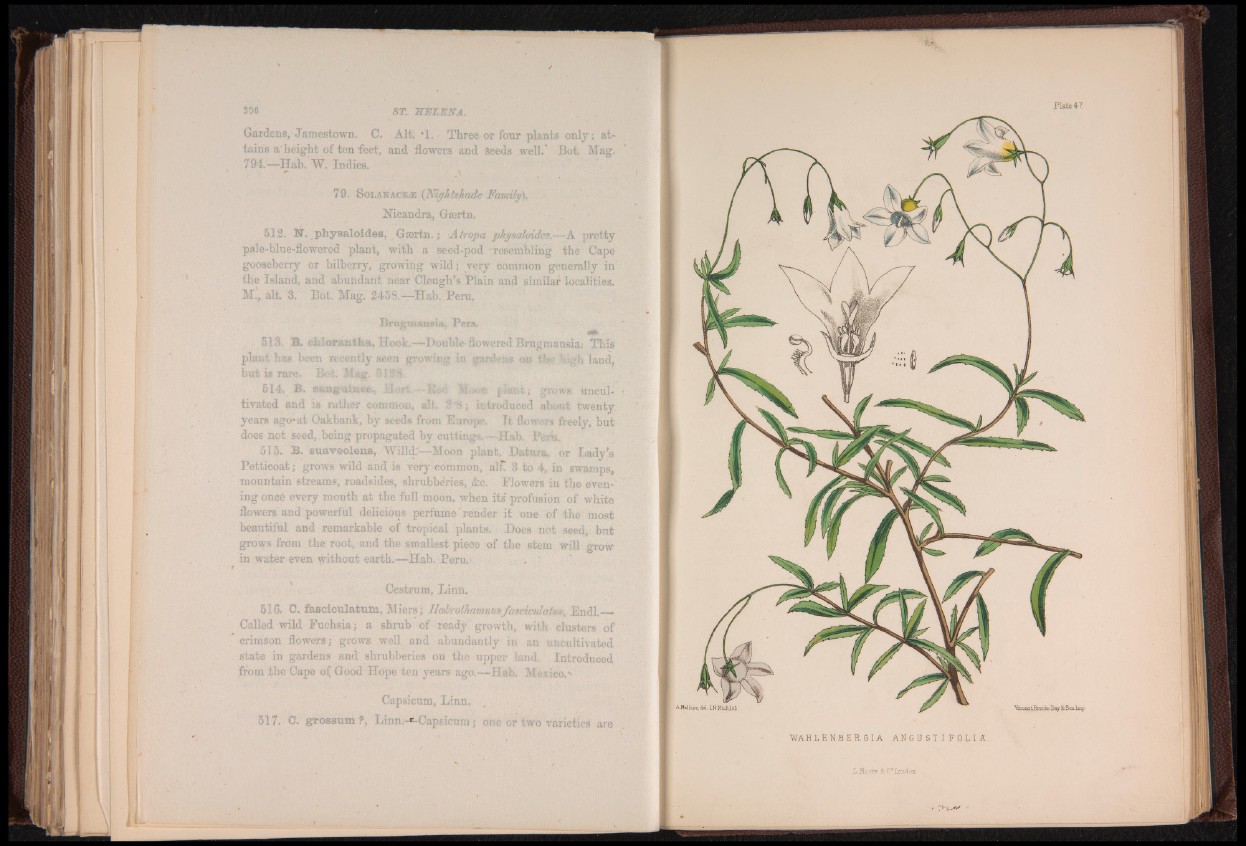
■ ST. HELENA.
awn. C. Alt: ‘l : Threi
’ ten feet, and flowers and
es. .*• -v .A'.
four plants only; at-
eds well.' Bot. Mag.
79. S o l a n a c e t E {Nightshade
Nicandra, Gmrtn.
512. N. physaloides, Gsertn.; Atropa physalou
pale-blue-flowered plant, with a seed-pod - resen:''
gooseberry or bilberry, growing wild; very
the Island, and abundant near Cleugh’s Plain and i
Ml, alt. 3. Bot. Mag. 2458.—Hab. Peru.
* loca
rers»
513. B.
plant has been rec
but is rare. Bot.
514 B. _
tivated and is rather common,
years ago-at Gakbank,
owere
arope.
uncul-
lueed about twenty,
It flowers freely, but
does not seed, , being propagated by cuttings.—-Hab. IWa.
515. B. suaveolens, Willd.—Moon plant, Datura, or Lady’s
Petticoat; grows wild and is very common, al£ 3 to 4, in swamps,
mountain streams, roadsides, shrubberies, &c. Flowers in the evening
ones every month at the full moon, when its profusion of white
flowers and powerful delicious perfume render it one of the most
beautiful and remarkable of tropical plants. Does not seed, but
grows from the root, and the smallest piece of the stem will grow
in water even without earth.—Hab. Peru.
Cestr um, Linn.
616. 0. fasciculatum, Miers; HoJiroiJtamniis fcisciculciin>■, End].——
Called wild Fuchsia; a shrub of ready' growth, with dusters of
crimson flowers; grows well and abundantly in an uncultivated
state in gardens and shrubberies on the upper land, introduced
from the Cape of Good Hope ten years ago.—Hab. Mexico.’-
Capsicui
517. C. grossum ?, Linn r Capsic
Plate 47.
Adfelli9 s ,d d . INJUchJUi. MncentBrooks Day & Sou Imp
■WAHLEN. B ER. 0 1A AN G U S T I F 0 L I A.